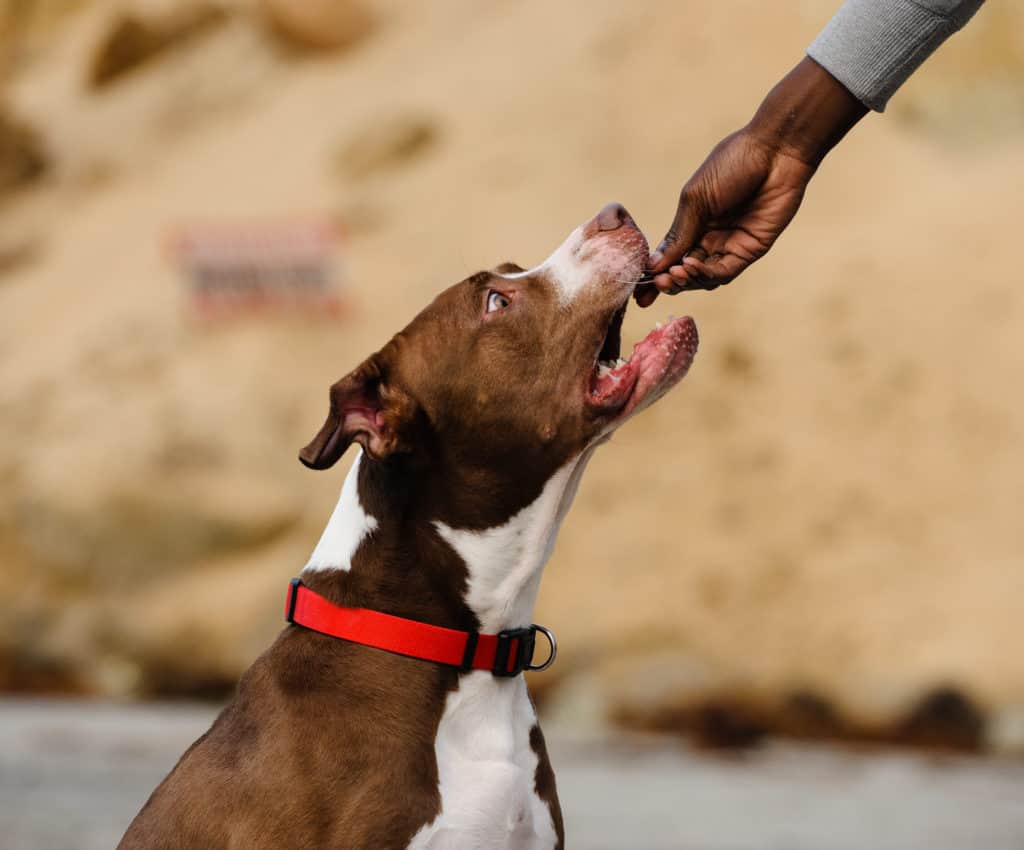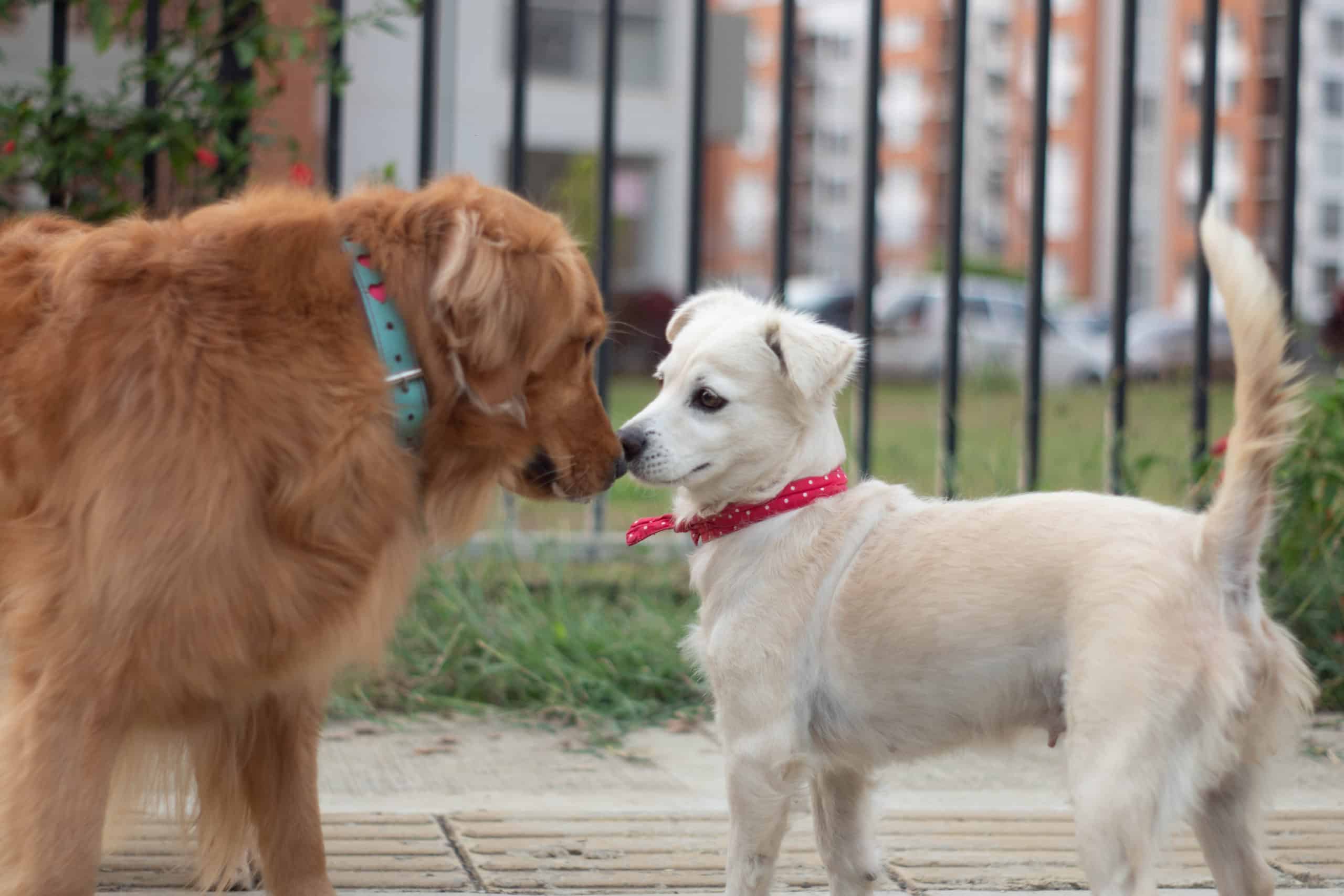There are a variety of things to consider when it comes to building a well-rounded, environmentally stable dog. As dog owners, if you’re looking to gain control of your dog’s behavior, it can be tempting to focus squarely on obedience commands. However, there is one often overlooked component which can drastically improve your dog’s behavior in a number of situations – socialization.
When implemented correctly, socialization enables your dog to behave reliably and predictably – irrespective of the other environmental factors at play. This improves their behavior around other dogs, humans, and in unusual settings or circumstances.
The difference between good socialization and bad socialization
Before we tackle this topic, it is important to draw a distinction between effective socialization (in other words, socialization that can improve your dog’s behavior) and unproductive socialization (activities which achieve the opposite effect).
For example, while taking your pup to the local dog park and letting them roam free to interact with every other dog is technically ‘socialization’, such uncontrolled socialization can actually have negative consequences. Taking them to the dog park isn’t teaching your dog anything.
Instead, consider setting up scenarios to effectively socialize your dog. Plan your outing, and set goals you want to achieve. Treat the socialization as if it was part of a training session. When you are mindful about the socialization outing, you increase the likelihood that it will be effective.
What are the benefits of effective socialization?
Effective socialization offers many benefits for both you and your dog, including:
- Helping dogs to generalize obedience cues
- Improving your dog’s focus on you
- Improving your dog’s environmental stability
- Increasing your confidence in your dog’s behavior
- Increases your dog’s confidence when taken out in public
- Helps to keep your dog calmer in public
When should I begin socializing my dog?
There is significant debate about the best age to begin socializing a puppy. In the early weeks of their life, puppies are not fully vaccinated and are more vulnerable to falling ill if they interact with other dogs/humans. However, the window between one month and three months old is when a puppy will truly benefit from novel experiences. Consider speaking with your veterinarian or a professional dog trainer if you are assessing when it would be best to begin socializing your puppy.
For adult dogs who are timid or uneasy when outside of their familiar environment, effective socialization can take longer to reap rewards. If a dog is in the routine of spending the majority of its day at home and doesn’t have the opportunity to interact with other dogs or humans, breaking them out of their comfort zone can take time. Starting small and not overwhelming your dog is the key. If your dog has a behavioral issue (such as extreme reactivity, aggression, fear or dominance) that makes socialization more difficult, consider enlisting the help of a professional trainer.

How to socialize your dog
As we outlined earlier in this article, it is important to spend time thinking about your dog’s socialization before you actually introduce them to another dog or a person. Questions to consider include:
- What are the goals of this socialization activity?
- Where will this socialization take place?
- What environmental factors will I need to consider?
- Who will be the other party in the socialization activity (dog or human)?
- How well do I know the other party, and are they calm around dogs?
- Is it likely that this will be a positive experience for my dog?
Answering these questions will encourage you to think about the socialization activity in more detail, and consequently, is more likely to result in a positive outcome for you and your pup.
How to socialize your dog with other dogs
For the obvious reason that dogs can be more unpredictable than humans, introducing your dog to other dogs requires careful consideration.
For this activity, it is vital to find a dog that you are familiar with, and an owner who understands what you are trying to achieve. Remember, we are trying to build confidence and create a positive experience for your dog, so it is imperative that the other dog is calm, stable and able to behave in a socially appropriate manner. Most importantly, the other dog should be able to interact with dogs of any temperament, and not be easily excitable or aroused.
When approaching the other dog, make sure your dog is as calm as possible. Maintain a loose leash and remain calm – your dog can sense your nervous energy down the leash. Allow your dog to sniff and interact with the other dog, ensuring they do not become overly excited. Do not feel like the interaction has to be overly long – it is better, at least initially, to have shorter interactions with positive outcomes.
It is worth noting that if your dog is particularly excitable, the interaction with another pup is likely to be innately reinforcing. This could result in higher levels of excitability when other dogs are present. In addition, never allow your dog to charge towards other dogs.
If your dog is fearful, forcing your dog to try and interact with others can make that problem worse. Instead, consider sitting on a bench in your local park or downtown area with your dog in a controlled position (sit or down), and keep them in that position as other dogs walk past. Reducing their fear will take time and need to be tackled with incremental gains.
How to socialize your dog with humans
Socializing your dog with your friends or family (without a dog present) can be a great way to build positive socialization experiences – as long as the human understands your training goals and ambitions.
For this activity, it is vital to find people who are a) comfortable interacting with dogs, and b) will listen to your instructions. To begin with, undersocialized dogs should only interact with adults, as children’s movements and behavior can be unpredictable.
When socializing your dog, ask the person to ignore your dog at first. Allow your dog to walk up and calmly approach the person when they are ready to do so, ensuring the dog is calm and under control. Once your dog has sniffed and made light contact with the person, they can take a couple of treats and be petted and praised.
It is important to stress that strangers should never lunge over the top of a dog they are not accustomed to, nor should they make wild or unusual movements that could provoke the dog’s excitability (this is obviously good practice whether a dog is undersocialized or not)
Where can you take your dog for socialization?
We are very fortunate in Indianapolis and the surrounding areas – there are plenty of places to take your dog on socialization outings! Take a look at our list of dog-friendly places in Indianapolis for inspiration.
In addition, group classes can be a great way to get puppies and adult dogs the socialization they require. At Greenside Canine Training, we often run group classes which focus on building environmental stability. Our professional dog trainers have the expertise to bring out the best in your dog and ensure a positive experience. Stay tuned to our Instagram and Facebook profiles for the latest on our group class schedule.

